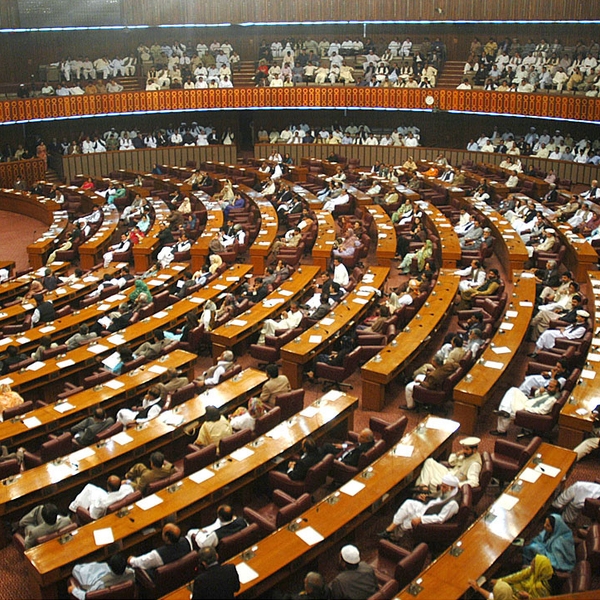Falling global commodity prices offer relief to Pakistan’s economy, analysts say
Potential $2 billion savings on energy imports may curb inflation, boost reserves
Business Desk
The Business Desk tracks economic trends, market movements, and business developments, offering analysis of both local and global financial news.

Falling global commodity prices, particularly a sharp decline in crude oil, are poised to provide a much-needed respite to Pakistan’s fragile economy, according to an analysis by Topline Securities.
The brokerage firm projects the country could record a rare current account surplus in fiscal year 2025 and see inflation drop sharply, setting the stage for modest but stable economic growth.
Topline noted that energy imports, which account for roughly 25% to 28% of Pakistan’s total import bill, stand to benefit most from the commodity slump.
Historical data from fiscal years 2015-2016 supports this outlook: When oil prices plunged 59%, from $109 a barrel to $44, Pakistan saved $6.4 billion annually, significantly easing balance-of-payments pressures.
With Brent crude currently trading around $67 to $68 a barrel — down from an average of $75 earlier in FY25 — analysts estimate potential savings of $1.5 billion on crude and refined oil imports.
Additionally, lower prices for liquefied natural gas (RLNG), which are tied to crude, could yield another $500 million in savings.
“In total, Pakistan could shave around $2 billion off its energy import bill in FY26,” the report stated.
Opportunities and Risks
Industry experts say these projections are realistic and encouraging. Energy imports have long been Pakistan’s economic Achilles’ heel, and savings of this magnitude could meaningfully stabilize the country’s external accounts.
However, analysts caution that the durability of low oil prices remains uncertain, hinging on Middle East stability and global demand trends. Any escalation in geopolitical tensions could reverse the gains.
Furthermore, compared with FY15-16, Pakistan now faces higher external debt obligations, weaker remittance growth and greater vulnerability to global financial tightening. “Lower commodity prices give us breathing space, but not immunity,” a Karachi-based analyst noted.
Import Bill Outlook
Total imports (FOB basis) are projected to reach $61.8 billion in FY26, a 5.7% increase from FY25’s estimated $58.5 billion. Importantly, this figure is lower than earlier forecasts of $64 billion, largely due to expected savings in energy imports.
On the non-oil side, Topline expects a 12% rise, consistent with historical patterns during gradual economic growth. This moderate increase is seen as healthy, suggesting the economy may be moving toward a more sustainable path without overheating.
The report bases its forecast on an assumed Brent oil price of $65 a barrel for FY26, a conservative estimate in line with U.S. Energy Information Administration (EIA) projections.
“This balanced import growth outlook is credible if oil remains in the $60 to $70 range and domestic demand stays manageable,” the report said.
“However, policymakers must tread carefully: An overly aggressive rupee appreciation, driven by external surpluses, could hurt exports and undermine industrial recovery.”
Inflation and Current Account
Falling commodity prices are also expected to curb inflation while helping Pakistan post a current account surplus for the first time in several years.
The dual impact — lower energy and food import costs — could bring consumer price index (CPI) inflation down significantly, likely to the 12% to 13% range by late FY25, analysts say.
A milder inflation outlook might allow the State Bank of Pakistan (SBP) to begin gradually easing monetary policy after a prolonged period of tight measures.
“If inflation falls consistently, we could see the SBP lower interest rates starting late 2025, supporting private investment and consumer spending,” Topline’s report noted.
“Lower inflation coupled with a potential current account surplus creates the best macroeconomic setup Pakistan has seen in years. However, discipline will be crucial. Previous commodity windfalls were squandered through loose fiscal policy and delayed reforms.”
Topline Securities’ analysis offers cautious optimism for Pakistan’s economic trajectory heading into FY26. Falling commodity prices could mark the difference between stagnation and revival — if supported by prudent policies and vigilance.
In short, Pakistan stands at a critical juncture. The commodity windfall provides breathing room, but sustainable recovery depends on reforms, political stability and external vigilance.










Comments
See what people are discussing